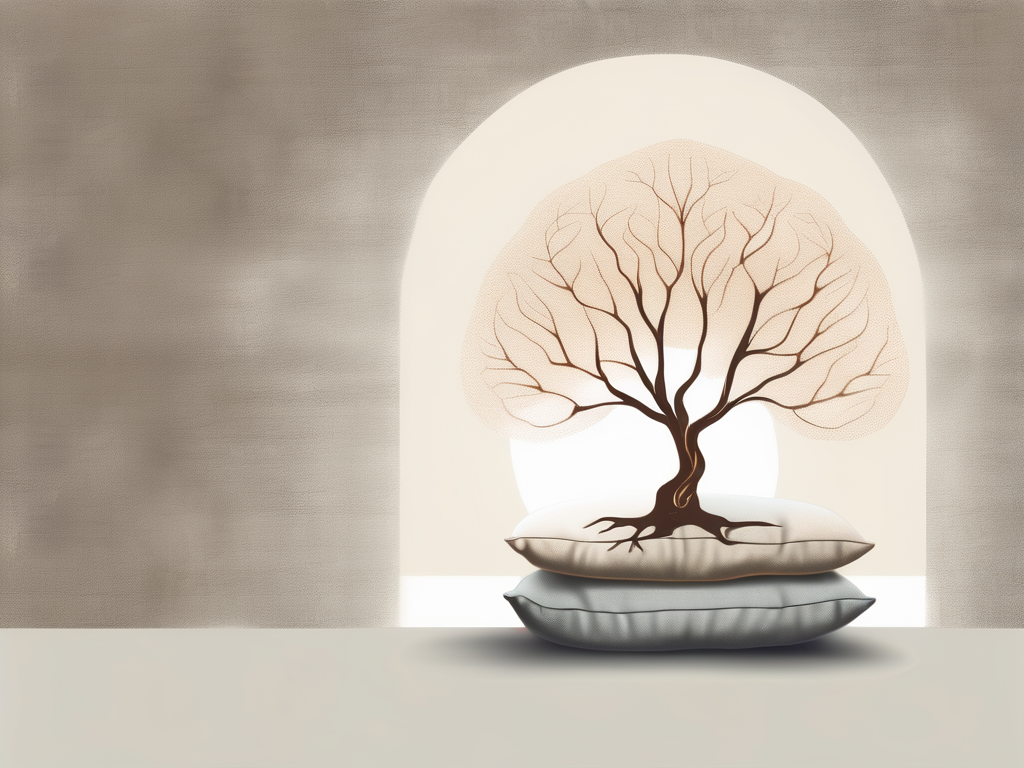Theravada Buddhism, one of the oldest surviving branches of Buddhism, traces its roots back to the teachings of its founder, Siddhartha Gautama. In this comprehensive guide, we will dive deep into the life and legacy of the enlightened sage as we explore the beliefs, practices, and key texts of Theravada Buddhism.
Understanding Theravada Buddhism
Theravada Buddhism, also known as the School of the Elders, is characterized by its strict adherence to the original teachings of the Buddha. At its core, this branch emphasizes the pursuit of individual enlightenment through ethical conduct, meditation, and insight. Let’s delve into the key beliefs and practices that define Theravada Buddhism.
Theravada Buddhism is deeply rooted in the Four Noble Truths, which encapsulate the Buddha’s profound insights into the nature of suffering and the path to liberation. These truths outline the existence of suffering, its causes, the possibility of its cessation, and the Eightfold Path leading to the end of suffering. The Eightfold Path encompasses ethical conduct, mental discipline, and wisdom.
One of the fundamental beliefs in Theravada Buddhism is the concept of kamma, which refers to the law of cause and effect. According to this belief, every action we take, whether physical, verbal, or mental, has consequences that shape our present and future experiences. This understanding of kamma encourages individuals to be mindful of their actions and cultivate wholesome intentions.
In addition to the Four Noble Truths and the belief in kamma, Theravada Buddhists also embrace the concept of anatta, which translates to “no-self” or “absence of a permanent and independent self.” This teaching challenges the notion of a fixed and unchanging identity, emphasizing the impermanence and interconnectedness of all phenomena. By recognizing the absence of a separate self, practitioners can develop a deeper understanding of the nature of reality and cultivate compassion towards all beings.
The practice of mindfulness and meditation plays a crucial role in Theravada Buddhism. Mindfulness involves being fully present and aware of one’s thoughts, feelings, and bodily sensations in the present moment. Through mindfulness, practitioners develop a heightened sense of self-awareness and cultivate a deep understanding of the impermanent and ever-changing nature of existence.
Monasticism, or the life of a monk, holds a significant place in Theravada Buddhism. Monks and nuns dedicate themselves to the pursuit of spiritual awakening and serve as custodians of the Dharma, preserving the teachings for future generations. Monastic life involves strict adherence to ethical guidelines, meditation practice, and the renunciation of worldly attachments. By renouncing material possessions and living a simple and disciplined life, monks and nuns create an environment conducive to deepening their spiritual practice and attaining enlightenment.
Within the monastic community, there is a strong emphasis on communal living and the cultivation of virtues such as compassion, generosity, and patience. Monks and nuns engage in daily rituals, including chanting, meditation, and study, to deepen their understanding of the teachings and strengthen their spiritual connection.
Theravada Buddhism also places great importance on the role of lay practitioners. Laypeople support the monastic community through acts of generosity, offering food, shelter, and other necessities. They also engage in their own spiritual practice, striving to live ethically and cultivate mindfulness in their daily lives.
Overall, Theravada Buddhism offers a comprehensive path to liberation through the cultivation of ethical conduct, meditation, and wisdom. It provides individuals with practical tools to navigate the challenges of life, develop inner peace, and ultimately realize the true nature of reality.
The Life of the Founder
Understanding the life of the Buddha is essential to unraveling the origins of Theravada Buddhism. Let’s explore the key milestones and influences that shaped the founder’s journey towards enlightenment.
Early Life and Influences
Siddhartha Gautama was born into a royal family in ancient India. Blessed with privilege and power, he experienced little exposure to the hardships of ordinary life. However, it was a chance encounter with suffering—an old age, sickness, and death—that sparked his curiosity and set him on a path of spiritual exploration.
As Siddhartha grew older, he began to question the purpose and meaning of life. He observed the suffering that plagued humanity and felt a deep sense of compassion for those who were less fortunate. This empathy drove him to seek answers beyond the confines of his luxurious palace.
Leaving behind his lavish lifestyle, Siddhartha embarked on a quest for truth, seeking guidance from various spiritual traditions and renowned teachers of the time. He studied under the most esteemed philosophers and engaged in rigorous debates, hoping to find the ultimate truth that would alleviate the suffering he witnessed.
During his travels, Siddhartha encountered ascetics who renounced all worldly possessions in pursuit of spiritual enlightenment. Intrigued by their dedication and discipline, he decided to adopt their way of life. For six years, Siddhartha lived as an ascetic, subjecting himself to extreme fasting and self-mortification in an attempt to transcend the limitations of the physical body.
However, Siddhartha soon realized that extreme asceticism did not hold the key to liberation. He had pushed his body to the brink of death but still found himself trapped in the cycle of suffering. Realizing the futility of his self-imposed hardships, he abandoned asceticism and sought a middle way—a balanced approach that would lead to true understanding.
Gradually, Siddhartha came to the realization that ultimate truth and liberation could not be found through external sources but had to be realized firsthand. He understood that enlightenment was not a destination to be reached but a state of being to be cultivated from within.
Spiritual Awakening and Enlightenment
After years of dedicated practice, Siddhartha Gautama achieved spiritual awakening under the Bodhi tree, becoming the Buddha, which translates to the “Awakened One.” His profound insights into the nature of existence and suffering would form the foundation of his teachings and the birth of Theravada Buddhism.
During his enlightenment, the Buddha gained a deep understanding of the interconnectedness of all things. He saw that suffering arises from attachment and desire, and that true liberation can only be attained through the cessation of craving. This realization became known as the Four Noble Truths, which would become the cornerstone of his teachings.
The Buddha’s enlightenment experience was not just a personal revelation but a universal one. He understood that his newfound wisdom had the power to liberate others from the cycle of suffering. With great compassion, he dedicated the rest of his life to sharing his teachings and guiding others towards enlightenment.
The Buddha’s teachings were not limited to theoretical concepts but were practical guidelines for living a meaningful and fulfilling life. He emphasized the importance of cultivating mindfulness, compassion, and wisdom in order to overcome suffering and attain liberation.
Throughout his life, the Buddha traveled extensively, spreading his teachings to people from all walks of life. He established a community of monks and nuns, known as the Sangha, who dedicated themselves to the practice and propagation of his teachings. The Buddha’s influence continued to grow, and his teachings laid the foundation for the development of Theravada Buddhism, which remains one of the oldest and most revered Buddhist traditions to this day.
The Founding of Theravada Buddhism
With his newly discovered wisdom, the Buddha set out to share his teachings with the world. Let’s explore the first teachings and disciples that laid the groundwork for the establishment and spread of Theravada Buddhism.
The First Teachings and Disciples
The Buddha’s inaugural sermon, known as the Dhammacakkappavattana Sutta or “Turning the Wheel of Dharma,” set forth the Four Noble Truths and the Eightfold Path. This pivotal moment marked the birth of his community of disciples, known as the Sangha.
As the Buddha expounded on the Four Noble Truths, he explained the nature of suffering, its causes, and the path to liberation. The Sangha, composed of both men and women, eagerly embraced these teachings, recognizing the profound wisdom they contained.
The Buddha ordained his first group of disciples, establishing a monastic community that would become the foundation of Theravada Buddhism. These early disciples, known as arahants, were fully enlightened beings who had attained the ultimate goal of liberation.
Among the first disciples were Sariputta and Moggallana, who would become the Buddha’s chief disciples and play instrumental roles in spreading his teachings. Sariputta was renowned for his wisdom and analytical abilities, while Moggallana possessed extraordinary psychic powers.
The Spread and Establishment of the Tradition
As the Buddha continued to teach and gain followers, his teachings found fertile ground across ancient India. Monasteries were established, providing a sanctuary for practitioners to deepen their understanding and practice of the Dharma.
The Sangha, under the guidance of the Buddha, embarked on extensive missionary journeys, spreading the teachings to various regions. These journeys not only helped establish new communities of practitioners but also fostered a sense of unity and shared purpose among the Sangha.
Over time, the teachings of the Buddha began to take root and flourish. The monastic community grew in size and influence, attracting individuals from all walks of life who sought liberation from suffering.
After the Buddha’s parinibbana, a council convened to ensure the preservation and accurate transmission of his teachings. This council, known as the First Buddhist Council, was held at Rajagaha and brought together five hundred arahants who had personally studied under the Buddha.
During the council, the teachings were meticulously recited and verified to compile the Tripitaka, the sacred scriptures of Theravada Buddhism. The Tripitaka consists of three sections: the Vinaya Pitaka (rules for monastic discipline), the Sutta Pitaka (discourses of the Buddha), and the Abhidhamma Pitaka (philosophical analysis and interpretation).
With the establishment of the Tripitaka, the Theravada tradition solidified its position as a distinct school of Buddhism. The scriptures became the guiding light for generations of practitioners, providing a comprehensive framework for understanding the Dharma.
As the tradition continued to evolve, it spread beyond the borders of India, reaching Sri Lanka and other parts of Southeast Asia. Today, Theravada Buddhism remains a vibrant and influential tradition, offering seekers a path to liberation through the Buddha’s timeless teachings.
The Key Texts of Theravada Buddhism
Theravada Buddhism, one of the oldest surviving Buddhist traditions, has a rich literary heritage that encompasses a wide range of texts. These texts not only provide guidance and inspiration for practitioners but also offer profound insights into the teachings of the Buddha. Let’s explore two of the most significant texts in the Theravada tradition in more detail.
The Tripitaka: The Three Baskets
The Tripitaka, meaning “Three Baskets,” is a vast collection of Buddhist scriptures that forms the foundation of Theravada Buddhism. It is divided into three sections, each referred to as a “basket,” which together contain a comprehensive record of the Buddha’s teachings.
The first basket, known as the Vinaya Pitaka, consists of rules and regulations for monastic discipline. It provides guidelines for the conduct and behavior of monks and nuns, ensuring the smooth functioning of the monastic community. The Vinaya Pitaka serves as a practical guide for those who have chosen the path of renunciation and offers valuable insights into the ethical principles that underpin the monastic life.
The second basket, the Sutta Pitaka, contains the discourses of the Buddha. These teachings cover a wide range of topics, including ethics, meditation, philosophy, and the nature of reality. The Sutta Pitaka offers a comprehensive guide to understanding the Buddha’s teachings and provides practitioners with practical instructions on how to cultivate wisdom and compassion in their daily lives.
The third basket, the Abhidhamma Pitaka, is a collection of texts that delve into the philosophical analysis and psychology of the mind. It explores the nature of consciousness, mental factors, and the process of perception. The Abhidhamma Pitaka is considered to be a more advanced and complex study, providing practitioners with a deeper understanding of the workings of the mind and the nature of reality.
Together, these three baskets of the Tripitaka form a comprehensive and authoritative source of guidance for Theravada Buddhists. They offer not only a roadmap for leading a virtuous life but also a profound exploration of the nature of existence and the path to liberation.
The Jataka Tales: Stories of the Buddha’s Past Lives
In addition to the Tripitaka, the Jataka Tales hold a special place in Theravada Buddhism. These stories recount the virtuous acts of the Buddha in his previous lives, before his final birth as Siddhartha Gautama. The Jataka Tales serve as a source of inspiration and moral guidance for practitioners, illustrating the qualities of kindness, compassion, generosity, and wisdom.
Each Jataka story presents a different episode from the Buddha’s past lives, highlighting the virtues he cultivated and the challenges he overcame. These tales not only entertain but also offer valuable lessons for practitioners on their own spiritual journey. They emphasize the importance of practicing virtues and developing wholesome qualities, as they are seen as essential for progress on the path towards enlightenment.
The Jataka Tales encompass a wide range of narratives, from simple stories to more complex allegories. They depict the Buddha in various forms, including humans, animals, and even celestial beings. Through these diverse tales, the Jataka collection emphasizes the universality of the Buddha’s teachings and the potential for awakening that exists in all beings.
By studying the Jataka Tales, practitioners gain insight into the qualities and virtues they need to cultivate in order to progress on the path. These stories serve as a reminder that the journey towards enlightenment is not limited to a single lifetime but extends across countless rebirths. They inspire practitioners to develop compassion, wisdom, and moral conduct, ultimately leading to the liberation from suffering.
In conclusion, the Tripitaka and the Jataka Tales are two key texts in Theravada Buddhism that offer practitioners a wealth of guidance, inspiration, and profound insights into the teachings of the Buddha. These texts serve as invaluable resources for those on the path towards liberation, providing a roadmap for leading a virtuous life and cultivating the qualities necessary for awakening.
Theravada Buddhism Today
Despite its ancient origins, Theravada Buddhism continues to thrive in the modern world. Let’s explore the global reach of this branch and how its teachings have evolved over time.
The Global Reach of Theravada Buddhism
Theravada Buddhism has spread beyond the borders of its birthplace, gaining followers in various countries such as Sri Lanka, Thailand, Myanmar, Cambodia, and Laos. Throughout history, the teachings have continued to adapt to local cultures while maintaining their core principles.
Modern Interpretations and Practices
In modern times, Theravada Buddhism has undergone various interpretations and adaptations, reflecting the diverse needs of practitioners in the contemporary world. Some focus on meditation practice, while others emphasize social engagement and the pursuit of social justice. These adaptations ensure the continued relevance and accessibility of the teachings in the present age.
In conclusion, Theravada Buddhism stands as a testament to the enduring legacy of its founder, Siddhartha Gautama. By understanding the core beliefs, practices, and key texts of this ancient branch, we gain valuable insights into the transformative power of the Buddha’s teachings. Whether we explore its history, delve into its philosophies, or witness its global impact, Theravada Buddhism continues to guide countless individuals on their quest for liberation and enlightenment.












